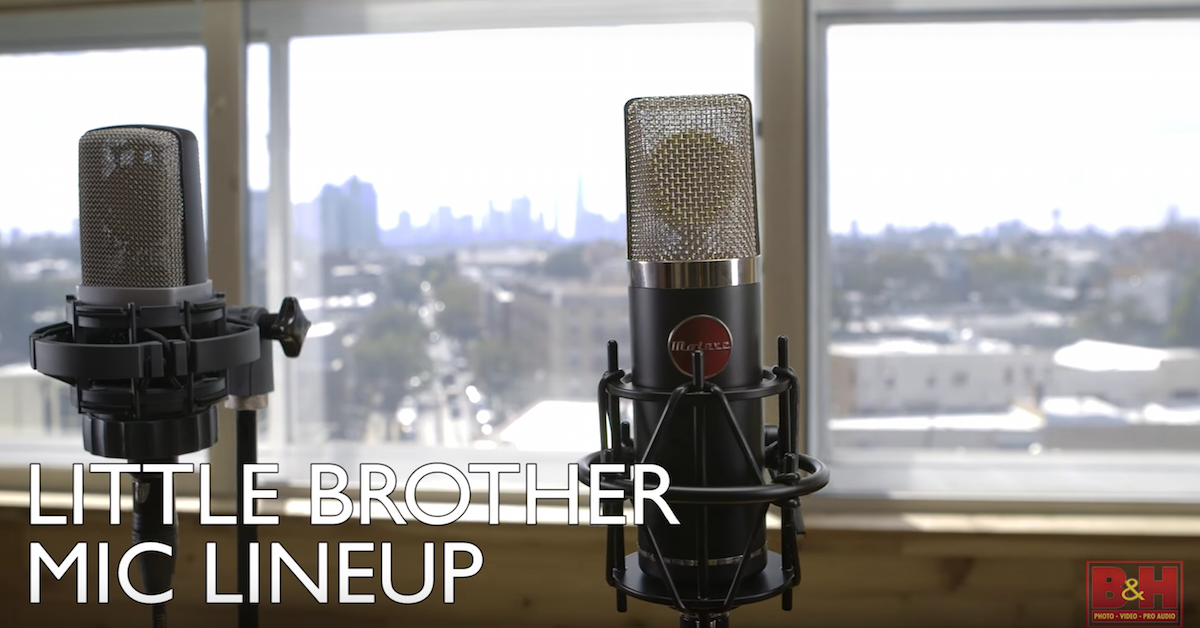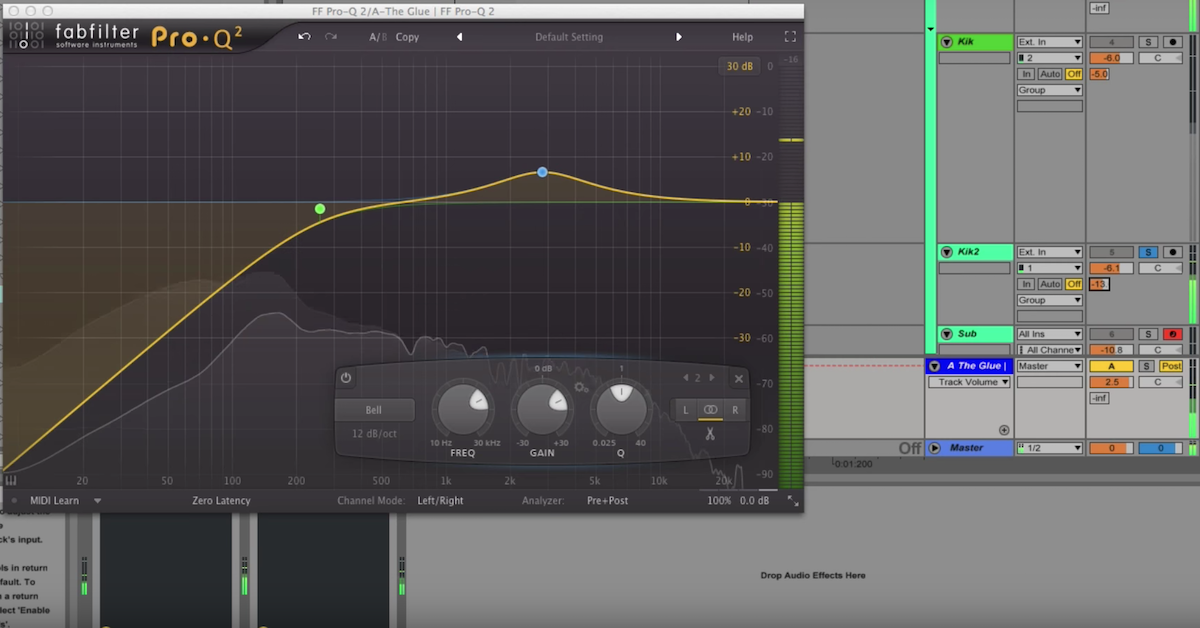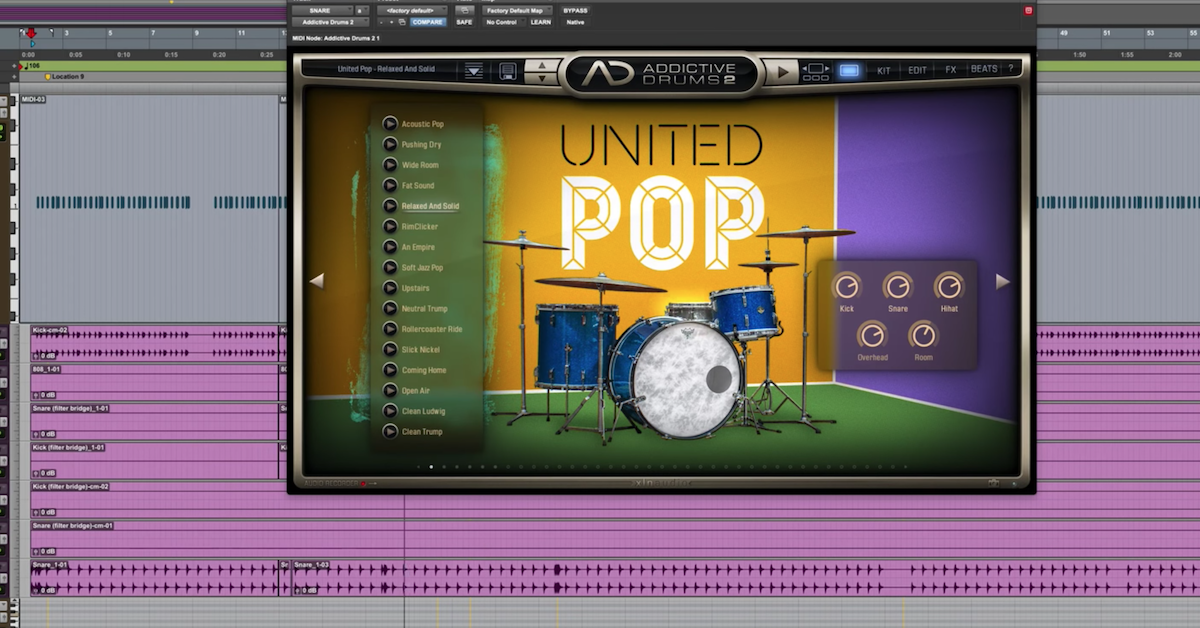How to Get a Great Kick Drum Sound with Telefunken Microphones
Mark: Hi, everybody. I’m Mark Hornsby. I’m here in Sweetwater’s Studio A with Nick D’Virgilio. Today, we’re talking about how to get a great kick drum sound using Telefunken microphones.
What I have in front of me is a 23 inch cherry DW kick drum. You’ll notice that the hole cut in the front head of the kick drum is not down here at the bottom, it’s more towards the center of the drum.
A lot of times when you get a drum head that comes with a kick drum, sometimes there’s a small hole down here at the bottom. Sometimes there’s no hole at all and you have to make one. DW and Remo are real good about sending this cutout, and you can place it wherever you want.
When cutting the hole in the kick drum head, it’s better to get it higher and more towards the middle of the drum. Most mic stands are not designed to stick the arm of the mic stand in the bottom of the drum. Furthermore, the beater on the other side is hitting the middle of the drum.
So in this case, we have a Telefunken M82 microphone. It’s going into the drum at a little bit of an angle, and I’m placing it right in the middle of the kick drum.
So when I put the mic into the kick drum, I want a nice balance between the front and the back head. Too far to the front head is going to give you simply the slap of the beater. Too far towards the back is just going to give you a lot of low end and a lot of air. So right about in here in the middle of the drum is a nice balance between the two heads.
One of the great things about the M82 microphone is it actually has two switches that give you some EQ options. One of the switches is a low mid-range cut. It’s about six dB at 350Hz. Lower mid-range in general on kick drums and toms, and a lot of times on the entire drum kit, can be distracting in a mix, it can be overwhelming, it can take the place of other instruments, so we tend to dial those frequencies out.
That EQ switch being there for us gets us off to a good start.
The M82 also has a high shelf that starts at about 6kHz and gradually rises from there. One of the great things about the M82 is the variety between the switches. You want a natural sounding kick drum, leave both switches off. If you want more lows and highs predominant in the mix, use the low mid-range cut. If you want more of the beater, more of the attack, more of a rock sound in the mix, use the high shelf.
Now, as a secondary option, we have the Telefunken CU-29 Copperhead microphone. This is a large diaphragm tube condenser, and we are using it out in front of the kick drum to blend with the microphone that’s inside of the kick drum.
There’s nothing wrong with having one microphone inside of the kick. It will do a lot of the work, especially the M82, but having an extra microphone out here where the air is moving in front of the drum can be a nice blend for more low end, for more high end, it really depends on how you EQ it in the mix.
When using a secondary mic out in front of the kick, you have to be careful where you put it. Getting right next to the drum, but leaving a little bit of room for the head to move so it doesn’t hit the microphone, is good. If the microphone is way out in front of the kick drum, it could introduce phase issues, and it also has a tendency to pick up more of the entire drum kit, and less of the actual kick drum.
Nick: As Mark mentioned earlier, this is a DW 23 inch cherry kick drum. Really nice, fat sounding kick drum. But it’s also worth mentioning that the techniques that Mark was talking about will work with whatever kick drum you have.
On the inside of this kick drum, I have two DW drum pillows. They make their own custom drum pillows that just dampen the resonant side and the beater side just a little bit, and it’s great for nice, general, fat kick drum sounds.
If you’re going for something different or totally specific, you can use other techniques as well.
Mark: Alright, so let’s take a listen to what we have. We have the Telefunken M82 with the low mid cut at 350 at 6dB of cut, we have the Telefunken CU-29 Copperhead mic on the outside, and when Nick hits the drum, what you’re going to hear is a blend of the two microphones, and the Telefunken CU-29 is blended down in the mix about 50%. So the low end that’s coming off the Copperhead is just being blended up in the mix to reinforce the bottom end, and leave the attack that the M82 is providing.
Additionally, in the control room, we are cutting another six to eight dB of 350Hz on each microphone.
Alright, let’s listen to what we’ve got. First, let’s listen to the Telefunken M82 by itself.
[kick, Telefunken M82 mic]
Now, let’s listen to the Telefunken CU-29 Copperhead by itself.
[kick, Telefunken CU-29 Copperhead]
Now, let’s listen to what happens when you blend the two microphones together.
[kick, mics blended]
Alright, now let’s hear this kick drum in context with the whole drum kit.
[drums]
If you’d like any more information about Telefunken microphones, contact your Sweetwater Sales Engineer.
[drums]






